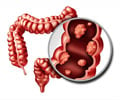The measurement of cell shape combined with the cells genetics could offer a more precise prognosis and treatment strategies for cancer.

‘Shape of the cancer cell could be added as one more variable in determining a cancer's prognosis from biopsy.’





The researchers from Colorado State University whose paper is published in the journal Integrative Biologyhope that their measurements of cell shape could be combined with genomic data to offer a more precise prognosis and guide strategies for treating a patient's disease."This is the tip of the iceberg - the beginning of an investigation taking shape - which comes from a well-known fact that the process of carcinogenesis leads to mis-regulation of the cytoskeleton. In other words, the formation of cancer changes the shape of cells," says Ashok Prasad, PhD, assistant professor in the CSU Department of Chemical & Biological Engineering.
He points out that when a pathologist examines a tumor sample, he or she may see physical abnormalities in a cell's growth or nucleus or chromosomes. However, "Our hypothesis is that there are subtler changes in shape at a statistical level, early in the process of carcinogenesis, that a computer could pick up," Prasad says.
To determine what these changes may be, Prasad and colleagues including first author Elaheh Alizadeh, PhD candidate in the Prasad lab, first had to quantify cell shape.
Rather than trying to categorize cells as "a little oblong" or "somewhat spherical", the group used what are called Zernike moments to precisely capture cell dimensions. Basically, a Zernike moment, named after physicist Frits Zernike who won the 1953 Nobel Prize in Physics, is a way of representing shapes as data.
Advertisement
"Machine learning is a tool that you have to give some examples - you have to say 'these are oranges and these are apples' and then a neural network can learn what distinguishes one from the other. Then you give the system an apple and see if it can correctly tell you which one it is," Alizadeh says.
Advertisement
"What we found is that if we first allowed our neural network to evaluate new cells - to recalibrate its categorization based on the characteristics of these new cells - it does predict the classes pretty well," Alizadeh added.
However, Prasad and Alizadeh point out that significant questions remain. For example, how a cell is prepared for imaging can affect its shape - "What you put these cells on when you look at them may affect what you see," Prasad says. Likewise, there are myriad ways to quantify cell shape, of which Zernike moment is only one possibility. Future research will explore additional ways to capture the data of a cell's dimensions.
Still, "If we could say that this set of shape changes represents these genetic changes - if we could do this, I think it would be amazing," Prasad says. "It would let us add shape as one more variable in determining a cancer's prognosis from biopsy."
Source-Medindia















